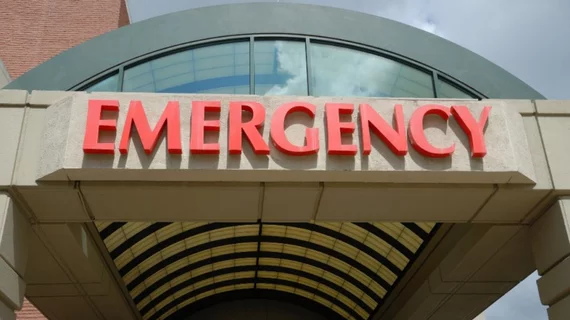Emergency radiologists face systematic disadvantages in current promotion system
Emergency radiologists appear to face systematic disadvantages in the academic field’s current promotion system, according to a new analysis published Friday in JACR [1].
When matched up by gender and career length, nonemergency radiologists are nearly twice as likely to be promoted to associate professor compared to their colleagues working with the ED. Overall scholarly productivity also is lower among emergency radiologists versus other subspecialties, researchers reported.
The findings were derived from an analysis of data spanning 283 emergency radiology faculty working across 25 institutions in the U.S. Researchers note that their conclusions hold significant importance, as emergency departments grapple with growing caseloads and challenges hiring physicians to meet demand.
“These findings raise concern that current academic infrastructure may be structurally disadvantaging the career development of emergency radiologists, which has longer term implications for recruitment, staffing and pipeline development,” Farid Hajibonabi, MD, with the Emory University School of Medicine in Atlanta, and co-authors wrote June 30. “This issue may extend to other nonstandard subspecialties like community radiology,” they added later.
For the study, researchers identified departments containing emergency radiology divisions via three lists. Those included Doximity’s top 20 imaging programs, the National Institutes of Health’s list of top radiology departments, and all institutions offering emergency radiology fellowships. They then identified individual emergency radiologists by reviewing departmental websites and matched them with colleagues of the same gender, at the same institution and with the same career length.
Out of nearly 300 physicians who met the study criteria, researchers were able to pair 112 with similar co-workers for comparison. Hajibonabi et al. unearthed significant differences. Emergency radiologists published a median of three articles versus 26 in the comparison group. They also identified only five full professors in emergency radiology compared to 18 in the nonemergency cohort.
The authors highlighted several possible reasons why ED rads lag behind other subspecialties. Oftentimes, their schedules are designed to prioritize clinical work over education and research, “potentially misaligning career incentives.” Plus, when forced to work odd hours, emergency radiologists may miss key departmental functions, including meetings and “other collaborative activities.”
“Additional reasons could be involved such as having less time for application to promotion or less mentorship in the promotion process or promotion readiness,” the authors noted. “Less trainee interaction and less professional service interaction would potentially hamstring the pipeline growth of the subspecialty,” they added later. “With promotion to full professor, we note that letter writers often required for promotion may be harder to find within the emergency radiology subspecialty. Importantly, promotion inequities themselves could result in decreased job satisfaction (perception of inequality) and challenges in staffing these academic divisions.”
Read more in the Journal of the American College of Radiology at the link below.

